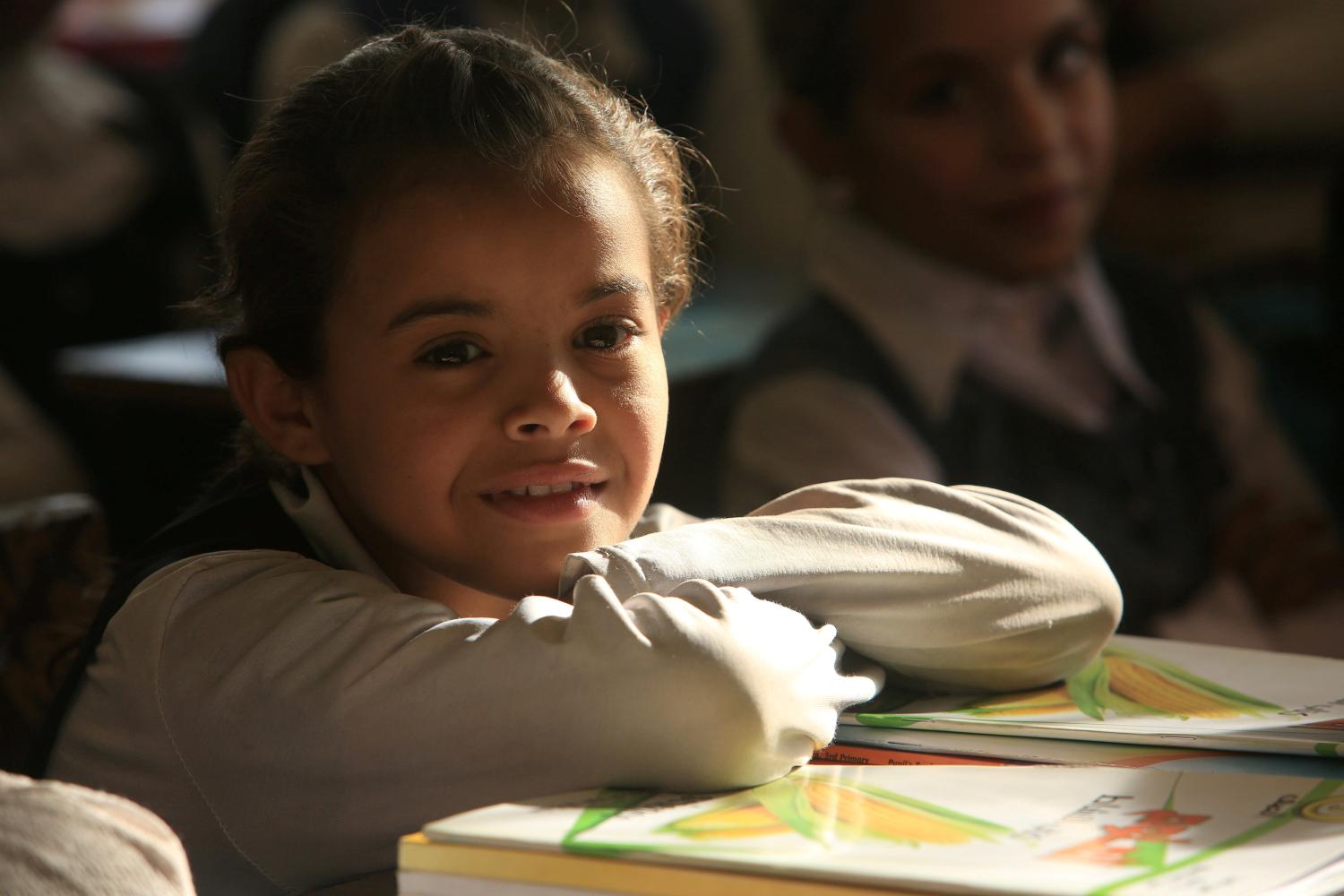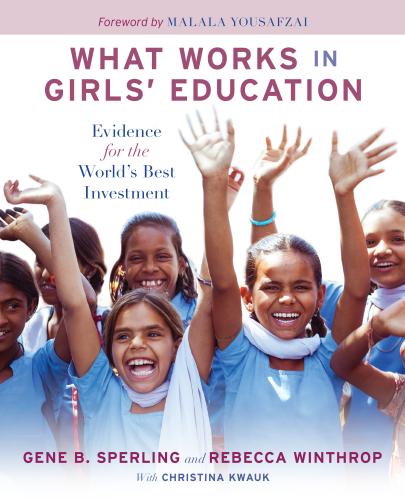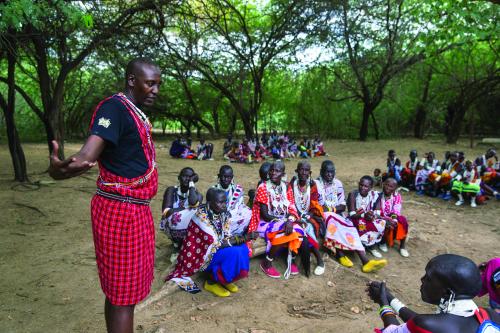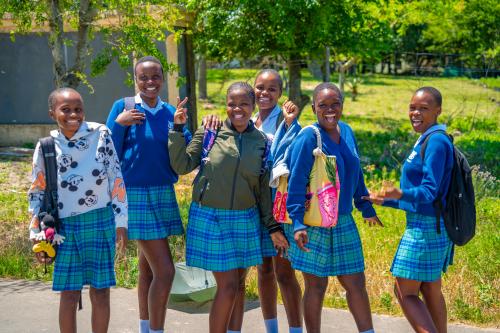As chair of the Girls CHARGE initiative, Brookings recently hosted the workshop “Mainstreaming Gender Justice through Dialogue with Boys,” in which Urvashi Sahni introduced her school curriculum developed at the Prerna Boys School in Lucknow, India. The program is designed to instill a greater understanding of gender equality principles among adolescent boys. In the panel that followed, Ruti Levtov of Prumundo and Oswaldo Montoya of the MenEngage Alliance drew on their work with men and boys to promote gender equality both in schools and in the broader community. Nora Fyles chaired the event, and here offers her reflections.
When I first began hearing the comment “what about the boys” in discussions about girls’ education I dismissed it as gender biased, and a desire to stop efforts to ensure equal access for all girls and boys. But as the trends in gender disparities have started to shift, and our goal posts changed from gender parity to gender equality, I have needed to rethink my earlier response to the question about “the boys”.
Last month UNGEI published a blog highlighting our new understanding of the changing nature of the gender gap in education. In many regions, the gender gap is at the expense of boys, particularly at the secondary level and for those from the poorest families. Yet as increasing numbers of women and girls gain access to and progress through education, they continue to face discrimination in schools, communities, homes, and the workplace. We have learned through experience that an exclusive focus on girls’ education does not allow us to address the deep structures of gender inequality that are reinforced in and through education. In parallel to tackling issues that marginalize girls, we know there is a need for more focus on the harmful gender norms that disadvantage both girls and boys.
In the context of this debate, the pioneering work of Urvashi Sahni to help adolescent boys to understand and promote gender equality through a school-based program offers a timely and promising model. While there is growing evidence of the critical role that education can play in empowering boys to challenge and overcome discriminatory gender norms, limited knowledge exists about how best to do this. The question no longer is “what about the boys?” but “what works for boys, and why”? The Brookings workshop provided a welcome platform to learn from the experiences of Promundo, MenEngage Alliance, and Prerna School.
Schools as sanctuaries
The Prerna Boys School curriculum Educating boys for gender justice is underpinned by the principle that to effect change in boys’ outlooks and behaviors around established gender norms, the learning context is as important as the content. One aspect of this concept that particularly resonated was the idea that schools need to be safe spaces and sanctuaries, far removed from the harsh and often violent experiences of daily life. Too often, through first-hand experience both inside and outside the classroom, children—in particular boys—learn to associate violence with power and respect. For boys, violence and dominance are aligned with norms of masculinity—“what it is to be a boy or a man”.
This brings new meaning to the call for schools to be safe spaces for learning. The school as a sanctuary is not only free from violence, it is a space where boys can experiment with not being violent; a space to express their feelings through drama and other activities, and develop emotionally without the pressure to conform. Over the last 5 years, UNGEI, UNESCO, and partners have sought a better understanding of school-related gender-based violence (SRGBV). The concept of schools as sanctuaries will strengthen our work to prevent SRGBV by changing negative social norms from the classroom into the lives of boys and the girls and women in their lives.
An alternative vision of masculinity
Another striking feature of the Prerna approach is the importance placed upon a school culture characterized by an “ethic of responsive care”. As role models and mentors to the boys in their charge, male teachers are gentle and caring men who present an alternative vision of masculinity. Together with their female colleagues, they work to reshape notions of care as applied to dominant norms of masculinity, linking it not just to the financial provider role but also to more nurturing qualities.
Cultivating critical thinking and a profound understanding of what it means to be equal
Urvashi’s approach to raising feminist consciousness in adolescent boys encourages them to recognize patriarchal privilege as wrong, to critically interrogate, and ultimately work to change it. Through weekly dialogue—free and open two-way discussions with peers and teachers—boys explore a range of issues, from child marriage to gender-based violence, that they, and the women and girls in their lives, face.
At the same time, she cautions that boys should not feel guilty for male privilege. Creating a sense of guilt or responsibility for the patriarchal status quo runs the risk of causing boys to become defensive or non-responsive. Instead, boys need to feel empowered to challenge inequality in order to live their own lives as “equal persons” and ensure girls and women enjoy the same right to be equal. As Urvashi reminded us, even the most marginalized boy is more advantaged than his sister.
The Prerna approach depends heavily on teachers’ own attitudes to gender norms and their ability to model gender positive approaches. A key challenge in promoting gender justice in and through schools is that the majority of teachers are poorly equipped to engage in critical dialogue about gender inequality.
As a start, teachers must become gender aware. Only when teachers and unionists recognize the negative power dynamics in their own lives can they begin to change the way they relate to fellow teachers and to the boys and girls in their classrooms. One project leading this effort is Education Unions Take Action to End SRGBV, which is implemented by UNGEI, Education International, and Gender at Work, and aims to put teacher unions in sub-Saharan Africa at the forefront of efforts to prevent SRGBV.
Similar work is being led by Claudia Mitchell (McGill University), Relebohile Moletsane (University of KwaZulu-Natal), and Naydene de Lange (Nelson Mandela University) with female preservice teachers. Promundo’s work with teachers and young men through Program H and PEGE also illustrate effective approaches to engaging men in developing gender awareness in schools and communities.
Introducing critical pedagogy into classroom curricula with a focus on boys is nothing short of revolutionary. However, the experience of Prerna School, Promundo, and the MenEngage Alliance demonstrate that it is possible to engage men and boys in changing gender norms and effect significant attitudinal and behavioral shifts. We are a long way from mainstreaming gender justice in schools, but by learning from and carrying forward the work of these pioneers, strides can be made.
The Brookings Institution is committed to quality, independence, and impact.
We are supported by a diverse array of funders. In line with our values and policies, each Brookings publication represents the sole views of its author(s).









Commentary
What about the boys? Educating boys for gender justice
June 1, 2018